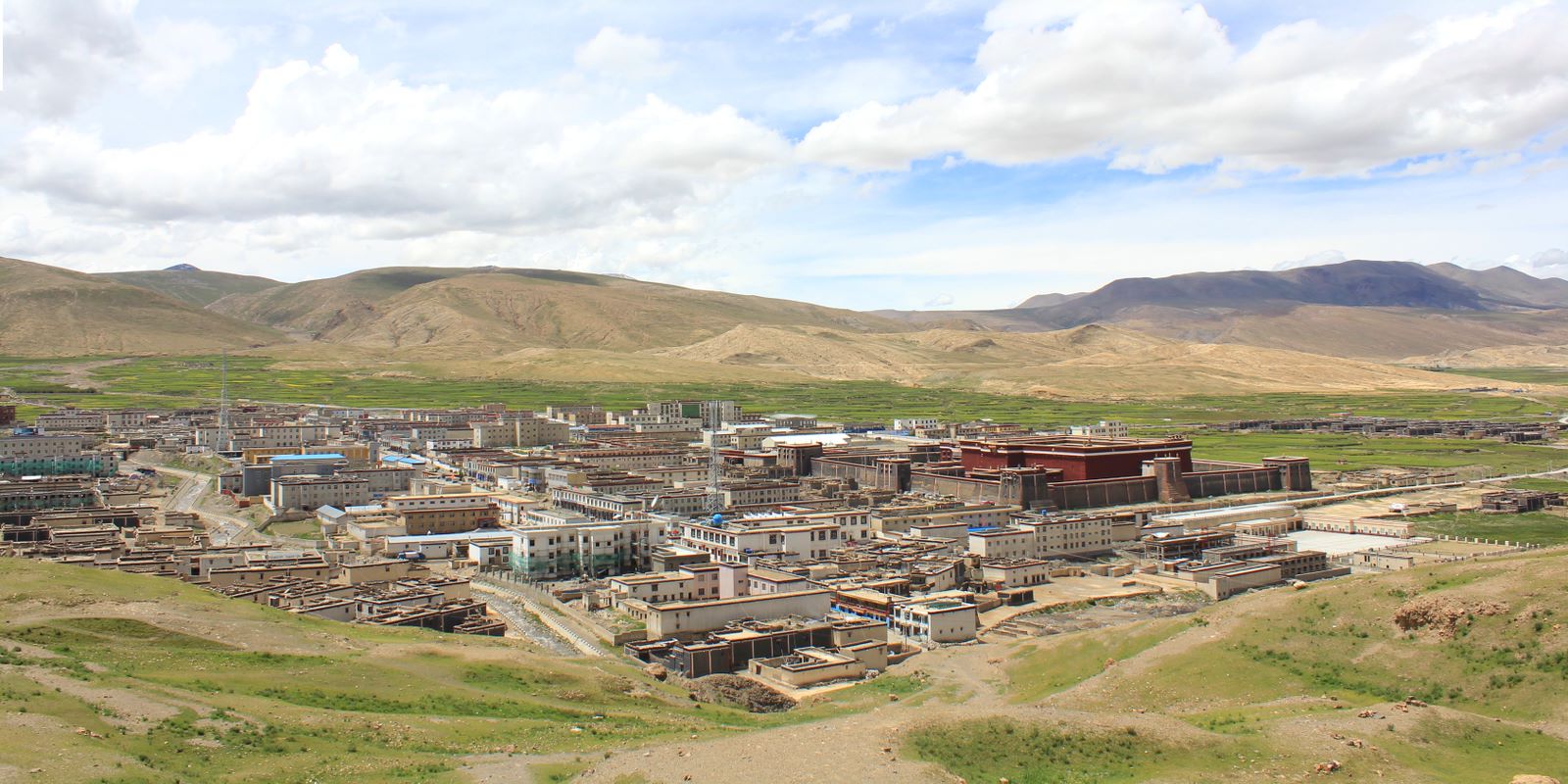
What is “Sakya”? Sakya literally means grey earth. The town where the school was founded and the school itself are both called “Sakya.” The area has a mountain in the shape of an elephant, known as Ponpori Mountain. The mountain is marked by a circle of grey earth, hence the name “Sakya.” This area has three special qualities.
Long before the Sakya school was established, Guru Padmasambhāva arrived at Sakya and said, “In the future there will be a big monastery established here. It will spread the Dharma in all directions and also benefit sentient beings immensely.” He then erected stupas in all four directions and blessed the earth. So, the ground of the Sakya Monastery in Tibet was blessed by Guru Padmasambhāva. This is the first special quality.
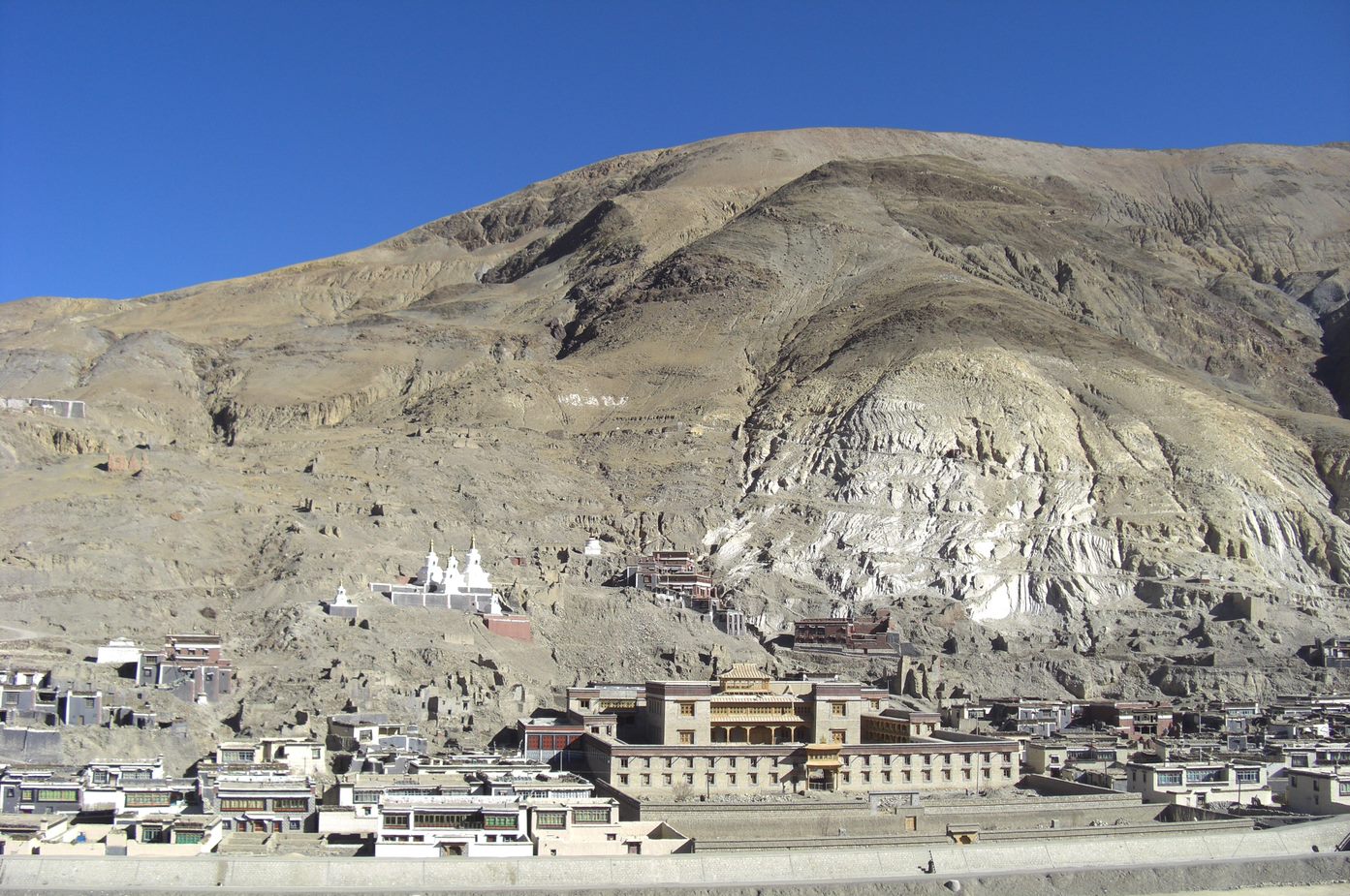
When Palden Atiśa came to Sakya and performed prostrations on the same place where Khön Konchok Gyalpo built the monastery decades later, his attendant inquired why he prostrated and made offerings to an empty land. Atiśa responded by saying, “Don’t you see that on this grey earth there are seven letter syllables of DHI (དྷཱིཿ), one letter syllable of HRIH (ཧྲཱིཿ), and one syllable of HUM (ཧཱུྃ་)? That means there will be seven emanations of Mañjuśrī, the Buddha of Wisdom, an emanation of Avalokiteśvara, the Buddha of Compassion, and an emanation of Vajrapāṇi, the Buddha of Power. And in future, there will be many emanations of these three bodhisattvas, who will benefit all sentient beings immensely. This is the reason I was doing the prostrations.” And this is the second special quality.
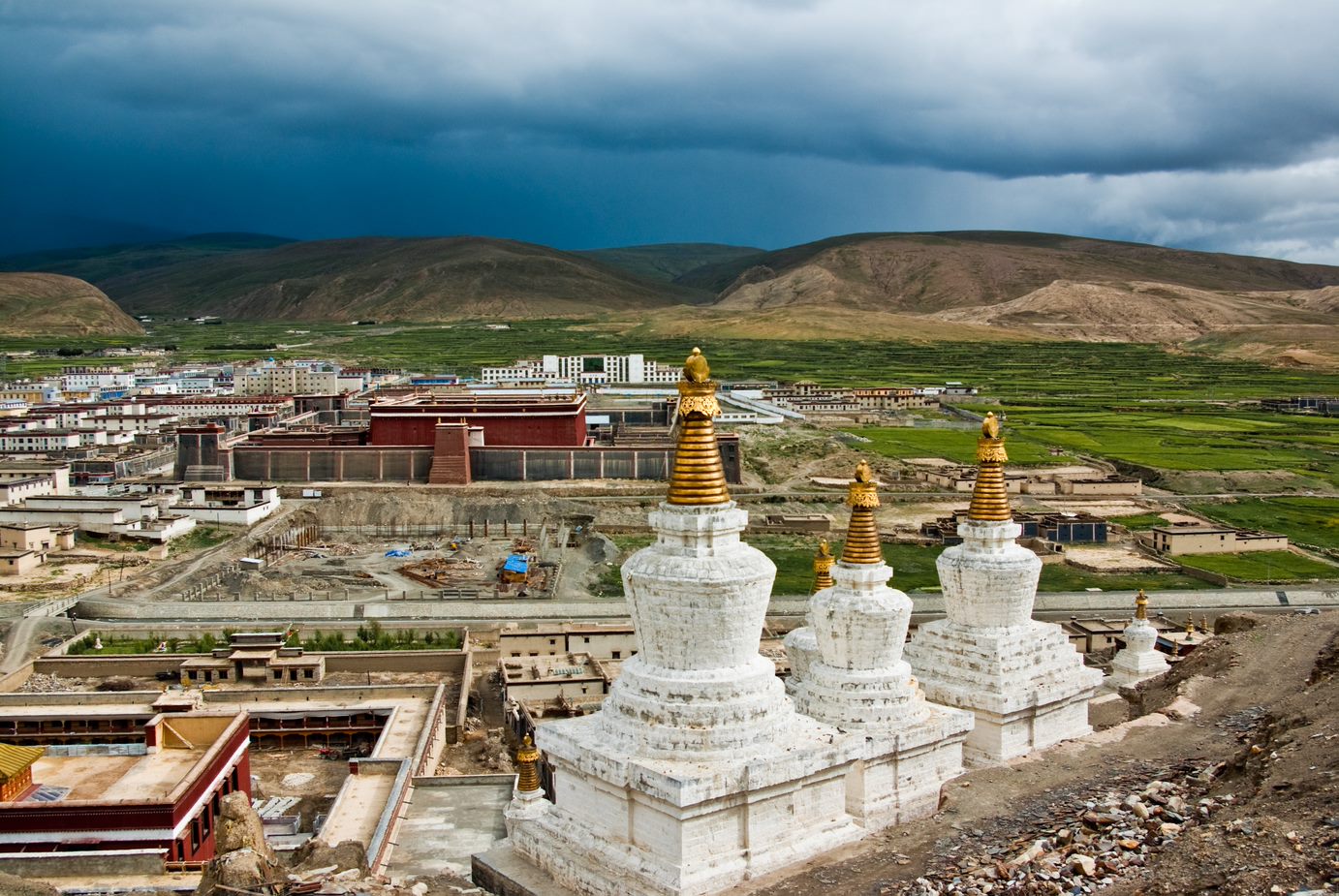

These four lines contain the entire Mahāyāna teachings. He accomplished realizations and taught these lines to his sons. It was written and was passed down up until now in a continuous lineage, as a preliminary teaching for mind training. This instruction is considered to be very authentic and pure mind training teaching, not only by the Sakya school but for all the other schools, too.
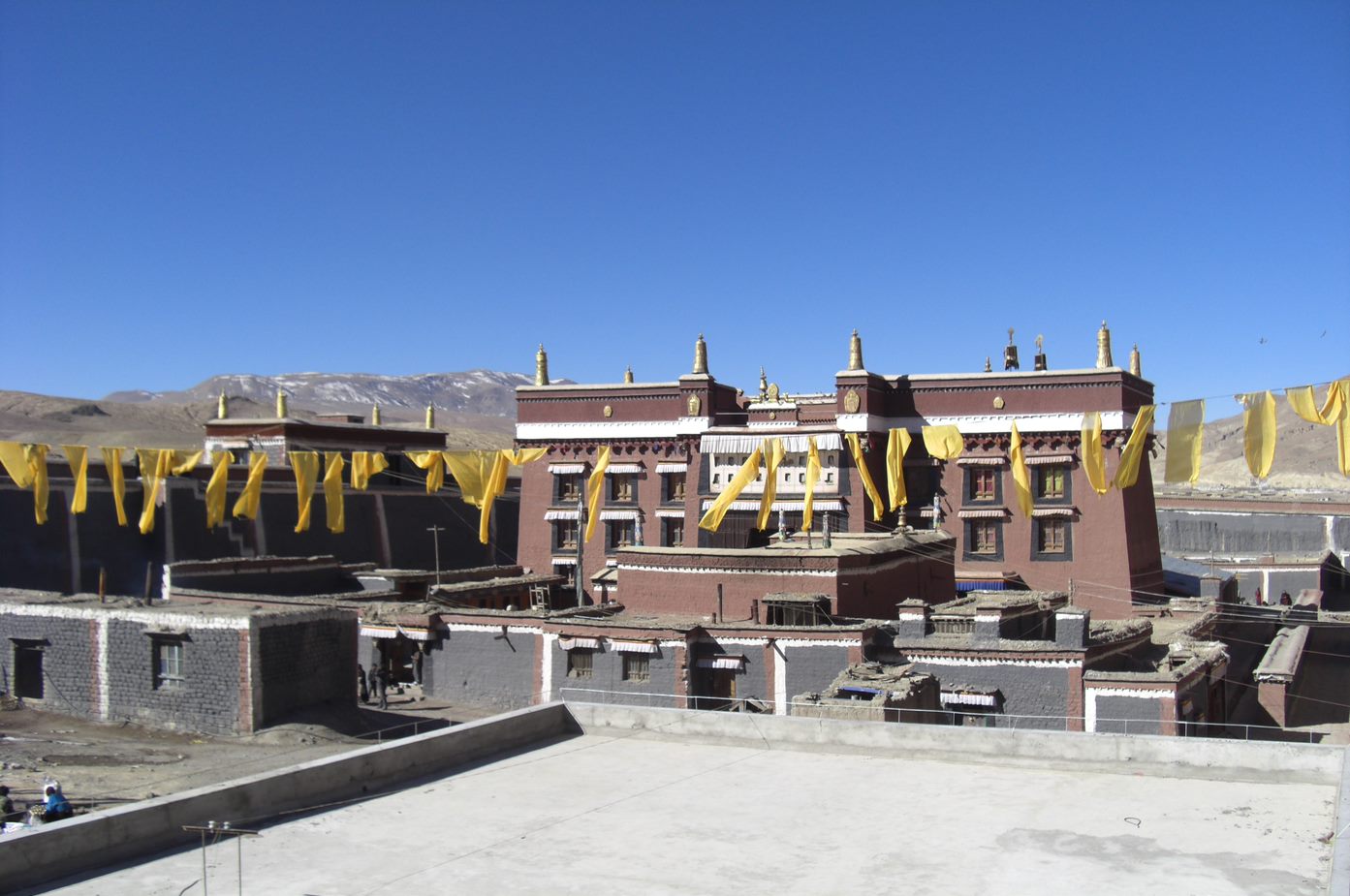
Subsequently Sachen received the Lamdré teaching from his guru, Shangton Chobar. “Lam” means path, “dré” means result; and “Lamdré” means the base, path, and result, all together—they are not separate. If they are separate, then that means they are not proper to be accomplished. They have to be together; they have to be linked. He received the complete Lamdré from his guru for many years. Upon completion, the guru imparted this advice, “For eighteen years you should not give this teaching to anyone, and do not even mention its name. After eighteen years, you may either teach to others or write it down. You can do whatever to it as you are the owner of the teaching.” Before this, Lamdré had been an oral teaching only—there was no text. Therefore, Sachen spent eighteen years in practice. However, one time, he fell ill and had to take very strong medicine. The strong medication resulted in him forgetting many of the Lamdré teaching. He felt very sad and was desperate since his guru was no longer alive and there were no other Dharma siblings, he could discuss this with. It was difficult to go to India, moreover the teaching was kept so secret that it was not easy to find, even if he were to journey to India.

Sachen prayed fervently to his guru and the teaching was revived—he started remembering the teachings. He prayed again and again, and his guru appeared as if in person to bestow the teachings to him. In this way he managed to remember most of the teachings. He continued praying and then one day Mahāsiddha Virūpa appeared. Mahāsiddha Virūpa was the abbot of Nālandā and later became a mahāsiddha. He is the original guru of Lamdré. The Lamdré lineage has five Indian gurus, and Mahāsiddha Virūpa is the first lineage guru of the Lamdré teaching. The first five lineage gurus of Lamdré are five Indian gurus, followed by several Tibetan translators. Virūpa appeared at Sakya. He was leaning toward the circle of grey earth and the whole valley was covered with his body, Virūpa announced, “This earth belongs to me!” This is the third special quality.
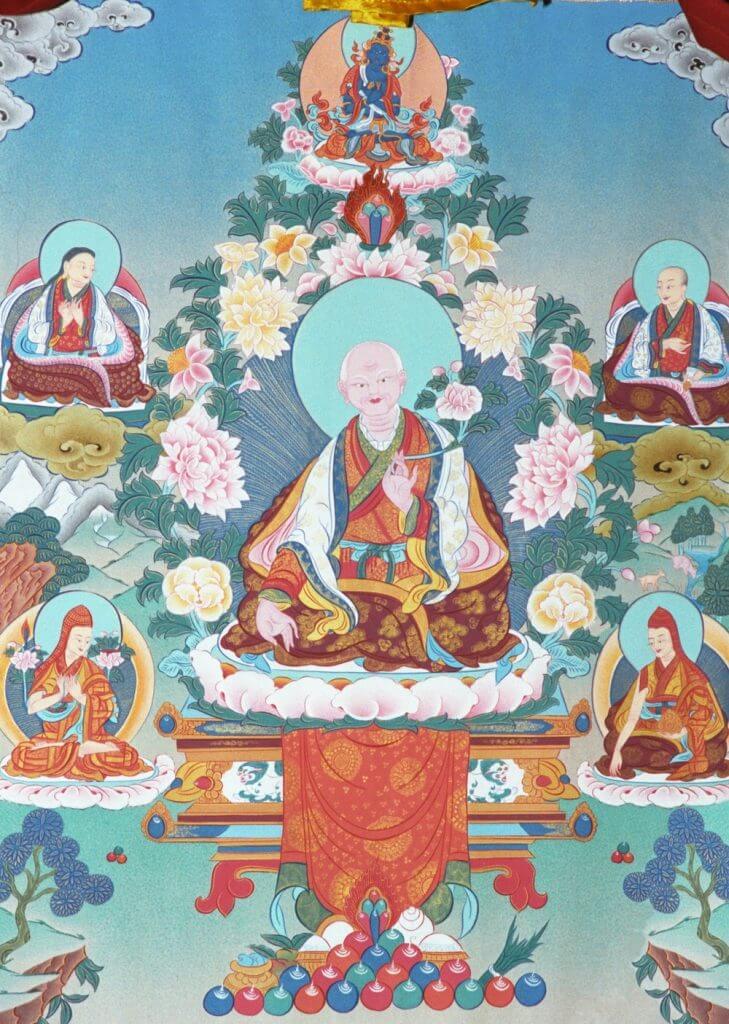 The Sakya Monastery was first established in 1073 by Khön Könchok Gyalpo. His son, Sachen Kunga Nyingpo widely known as the first Sakya patriarch as mentioned earlier, received the “Parting from the Four Attachment” teaching directly from Mañjuśrī and the Lamdré teaching as well as many other teachings within the one-month period from Mahāsiddha Virūpa. Lama Sakyapa had four sons. The first son, Kungabar, went to India to study and passed away there. His second son was Lopön Sönam Tsemo, known as the second Sakya patriarch. He was a very great scholar, whose fame reached even as far as the Ganges River. Sönam Tsemo wrote many books, on sūtrayāna as well as mantrayāna, and many books on ritual. The third son was Jetsün Dragpa Gyaltsen, the third Sakya patriarch. He was a very good master, especially for Lamdré teachings. In terms of Lamdré teaching, he is the most important master because, as Lamdré is a pith instruction, Lamdré has many hidden words and thus needs many detailed explanations. Jetsün Dragpa Gyaltsen was good in explaining these teachings and the real owner of all the secret teachings.
The Sakya Monastery was first established in 1073 by Khön Könchok Gyalpo. His son, Sachen Kunga Nyingpo widely known as the first Sakya patriarch as mentioned earlier, received the “Parting from the Four Attachment” teaching directly from Mañjuśrī and the Lamdré teaching as well as many other teachings within the one-month period from Mahāsiddha Virūpa. Lama Sakyapa had four sons. The first son, Kungabar, went to India to study and passed away there. His second son was Lopön Sönam Tsemo, known as the second Sakya patriarch. He was a very great scholar, whose fame reached even as far as the Ganges River. Sönam Tsemo wrote many books, on sūtrayāna as well as mantrayāna, and many books on ritual. The third son was Jetsün Dragpa Gyaltsen, the third Sakya patriarch. He was a very good master, especially for Lamdré teachings. In terms of Lamdré teaching, he is the most important master because, as Lamdré is a pith instruction, Lamdré has many hidden words and thus needs many detailed explanations. Jetsün Dragpa Gyaltsen was good in explaining these teachings and the real owner of all the secret teachings.
The fourth son was Palchen Opo. Palchen Opo’s son is Sakya Paṇḍita, the fourth Sakya patriarch, who is very well known and was the first Tibetan to receive the full Paṇḍita title. He also wrote many treatises and commentaries, especially on Buddhist logic. There are many Indian books translated from Sanskrit to Tibetan language. However, only Sakya Paṇḍita’s books, especially on Buddhist logic, among all the books authored by other Tibetan masters, were translated back into Sanskrit. This is because Sakya Paṇḍita’s books were so complete and authentic.
Sakya Paṇḍita’s younger brother, Zangsta Sönam Gyaltsen, had two sons: Drogön Chögyal Phagpa, the fifth Sakya patriarch, and Drogön Chakna Dorjé.
During the Mongol Empire, Sakya Paṇḍita and Chögyal Phagpa were invited to Mainland China by the Mongol emperors. That was the first time Vajrayāna teachings were spread into Mainland China and the Mongolian region. Both Sakya Paṇḍita and his nephew Drogön Chögyal Phagpa eventually became the royal priests of the Mongol emperors. Vajrayāna Chögyal Phagpa also became the ruler of Tibet because the emperor gave all three provinces to Chögyal Phagpa as an offering. Thus, he became the first lama king in Tibet.
Moreover, Drogön Chögyal Phagpa was the one who composed the Mongolian script.
These five great masters are widely known as the five Sakya patriarchs: Sachen Kunga Nyingo, Lopön Sönam Tsemo, Jetsün Dragpa Gyaltsen, Sakya Pandita, and Chögyal Phagpa.
Lamdré
The main and most important Sakya teaching is Lamdré.
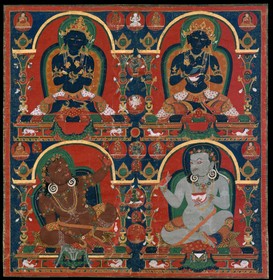 Lamdré is taught through the four authenticities: authentic teachers, authentic Buddha’s words (sermons), authentic commentaries and teachings, and authentic experience. Lamdré is taught with these four authenticities, and the main sequence of how you receive teachings from your teacher, then spend time in your own study, contemplation, and meditation, are the same, although other aspects—such as how it was originated, how it was translated, and how you practice—may be different. Through meditation, you gain special experience. When you gain special experience, you are convinced that your teacher is authentic. Because if your teacher is not authentic, you cannot have such wonderful experiences. You then establish that your teacher is authentic. The teaching he or she bestows is also authentic because the commentary is given by Mahāsiddha Virūpa and ancient masters. Therefore, you are convinced that it is authentic. That is also based on the Buddha’s words; hence it is also authentic.
Lamdré is taught through the four authenticities: authentic teachers, authentic Buddha’s words (sermons), authentic commentaries and teachings, and authentic experience. Lamdré is taught with these four authenticities, and the main sequence of how you receive teachings from your teacher, then spend time in your own study, contemplation, and meditation, are the same, although other aspects—such as how it was originated, how it was translated, and how you practice—may be different. Through meditation, you gain special experience. When you gain special experience, you are convinced that your teacher is authentic. Because if your teacher is not authentic, you cannot have such wonderful experiences. You then establish that your teacher is authentic. The teaching he or she bestows is also authentic because the commentary is given by Mahāsiddha Virūpa and ancient masters. Therefore, you are convinced that it is authentic. That is also based on the Buddha’s words; hence it is also authentic.
So, first, through gaining authentic experience by yourself, you can establish that your guru, the teaching, and the Buddha’s words are all authentic. In this way, the four authenticities are established.
Whatever religious belief you choose, you choose it yourself, and then you practice. Once you start your practice, you should not jump here and there. You have to continue until you are accomplished and until you gain experience. As you gain experience, then you will gain more and more aspiration and inspiration to practice more.
Other Sakya Teachings
Buddhism arrived from India to Tibet, hence the teachings had to come through the translators. Teachings that came from the translators are considered very pure and authentic. The Sakya teachings mainly came from the four great translators: Bari Lotsāwa, Drokmi Lotsāwa, Mal Lotsāwa, and Lotsāwa Rinchen Sangpo.
Some of the teachings are as follows:
Thirteen Gold Dharma
There are also the renowned Thirteen Golden Dharmas (the three Khecara Vajrayoginīs, the three major red cycles–Kurukulle, Gaṇapati, and Takkiraja, the minor red cycles–Kurukulle, Red Vasudhārā, and Tinuma, and Siṃhamukhā, Black Mañjuśrī, Garuda, and Red Jambhala.
Keep-to-date with the latest news and teachings of the Sakya Tradition

P.O. Box 410282
Cambridge, MA 02141
info@sakyatradition.org